The British Isles are home to a wide range of butterfly species, some of which are less widespread than others. Additionally, some look remarkably similar to others, and it can often be difficult to distinguish and identify common garden butterflies from one another.
Whether you’ve been planting nectar-rich flowers and now have different butterflies visit, or you simply want to increase your knowledge of regional wildlife, this list highlights several British butterflies that you may encounter in your garden.
15 Common UK Butterflies
Holly Blue
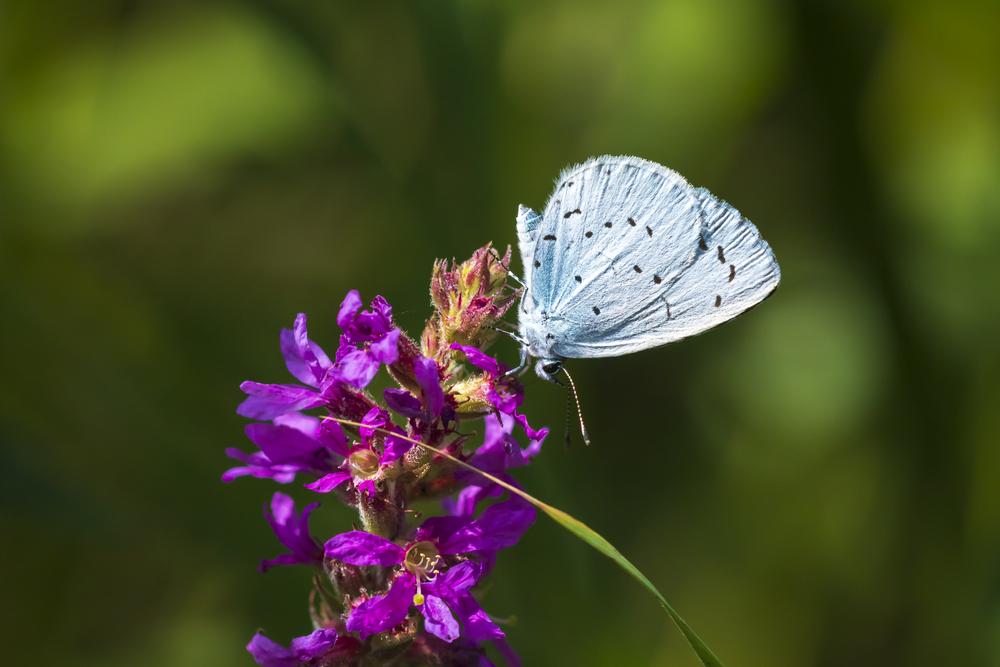
A small and inconspicuous butterfly, the holly blue (Celastrina argiolus) is a common species of little conservation concern. The adult butterflies are usually bright blue with black wing edges, and on the silvery underside of each forewing, there are multiple black marks. They have been recorded occasionally as far north as Northumberland but are normally found in a band stretching from Norfolk to North Wales.
Meadow Brown
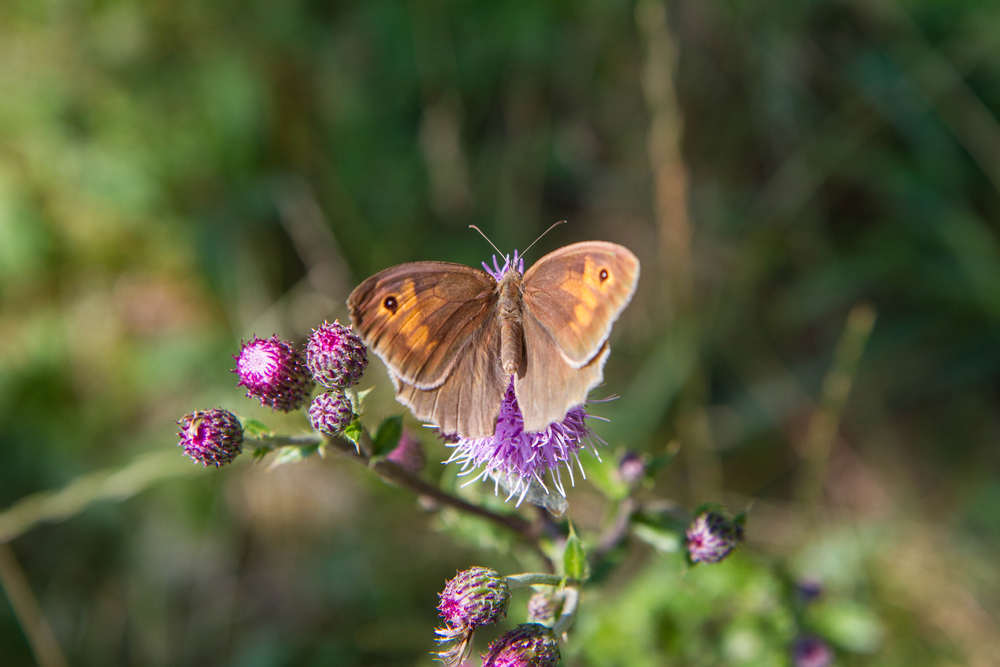
The meadow brown (Maniola jurtina) is possibly the most abundant butterfly in Britain, with a large range and population. The adults are brown with orange on the upper wings and have brown marbled markings on the underside of their wings. They feed on various types of grasses when they are caterpillars, causing some concern that they could damage crops such as sugar beet if released into commercial fields.
Small Blue
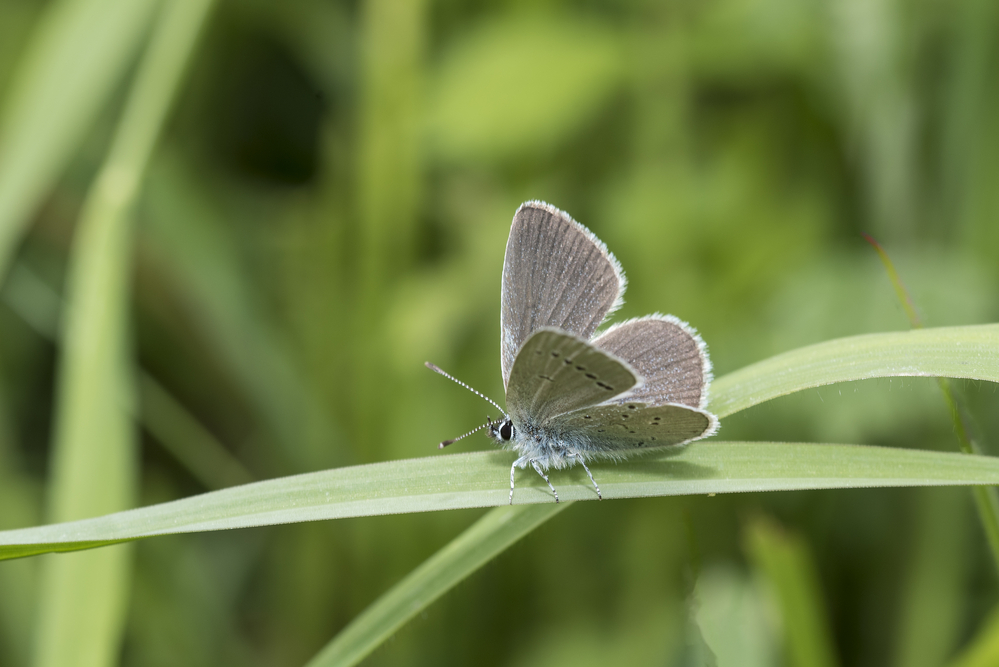
A small butterfly with a wingspan of around 20-30 millimetres, the small blue (Cupido minimus) is widespread in southern and central England but rarer elsewhere. It has distinctive blue dusting on its forewings and black-spotted white hindwings. A plant-lover as a caterpillar, it can be found in a wide range of habitats, including meadows, heathlands and woodland clearings.
Large White
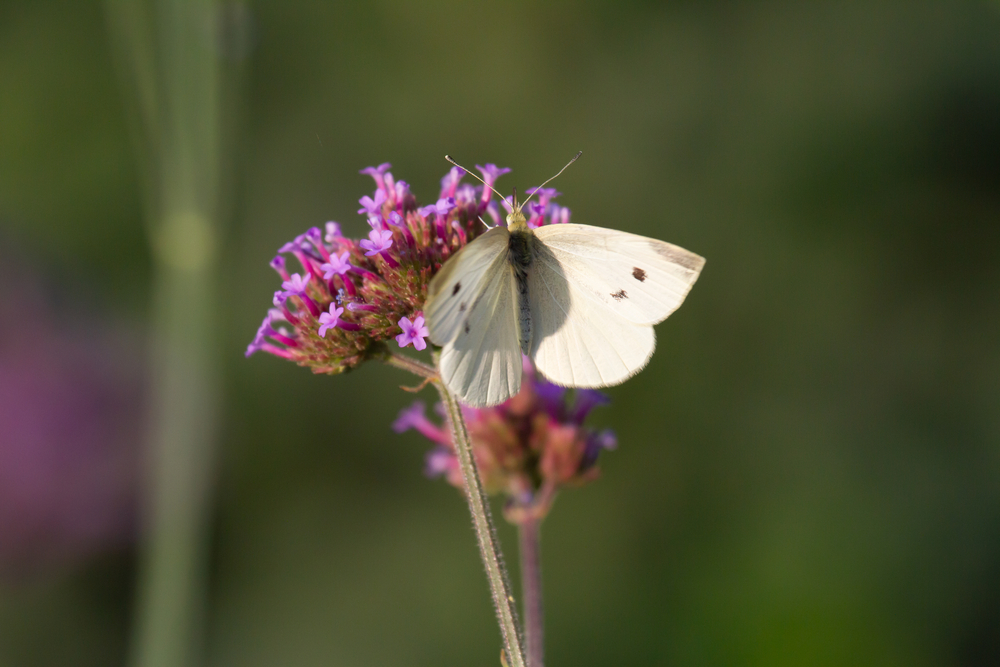
The large white (also known as the cabbage butterfly or cabbage white) is named after its distinctive white wings and brownish black tips on its forewings, and light grey tips on its hindwings. It is widespread across the British Isles, except for parts of Scotland. When the weather is hot and sunny, it often sits on walls or stones in large groups, but it can be seen flying along hedgerows and roadsides when the days become cooler.
Painted Lady
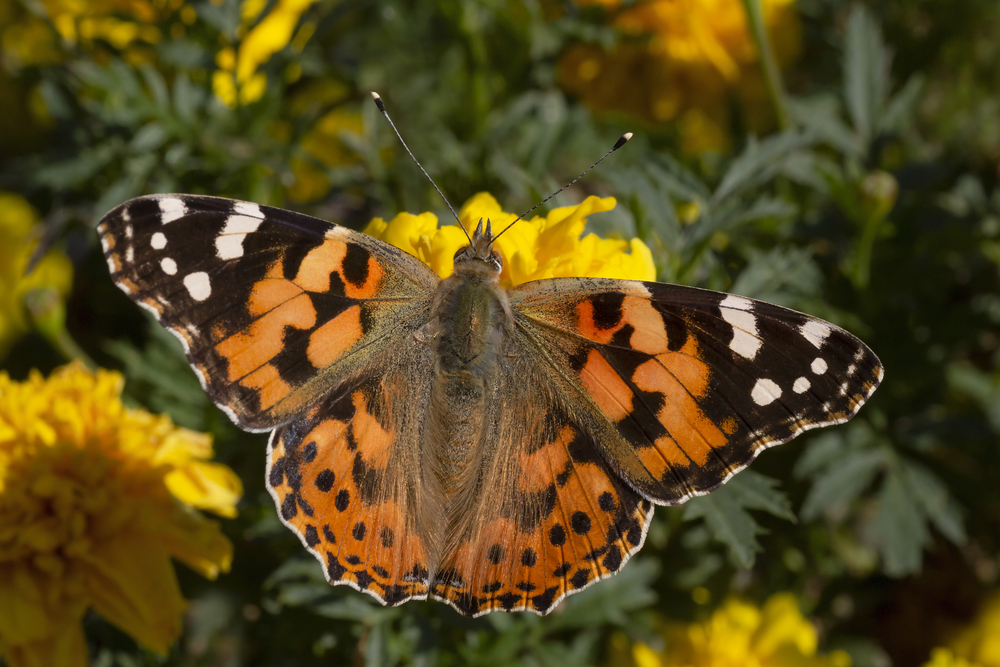
Painted ladies (Vanessa cardui) are one of the most common butterflies you may see in the British countryside, and you will most likely only see them on sunny days. It is not a true resident of Britain, but large numbers fly north every spring from Africa and other Mediterranean countries. They tend to stay close to the coast, so are mostly found around the south and east coasts. The adult butterflies are wide-ranging, eating nectar from many different flowers. As caterpillars, they feed upon plantain and other grasses in open fields.
Small White

With a wingspan of around 20–30 millimetres, the small white (Pieris rapae) is widespread in central and south-east England but rarer elsewhere. A plant-lover as a caterpillar, it can be found in a wide range of habitats, including meadows, heathlands and woodland clearings.
Small Copper
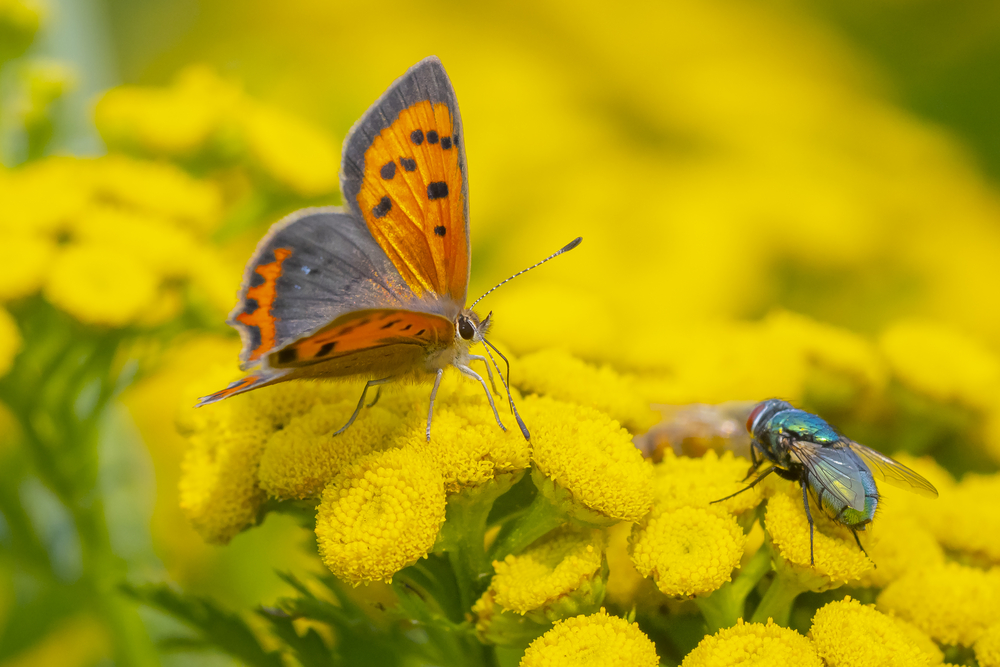
This is a semi-permanent resident, and you may see them hibernating in sheltered areas and can even find them in private conservatories. With its bright orange forewings that feature dark brown spots and dark brown margin, and with its dark brown hindwings, the small copper (Lycaena phlaeas) is one of the most distinct on this list. The butterflies use a wide range of plants as their food source, with the most commonly used plants including Stinging Nettle and Greater Stitchwort.
Green-veined White
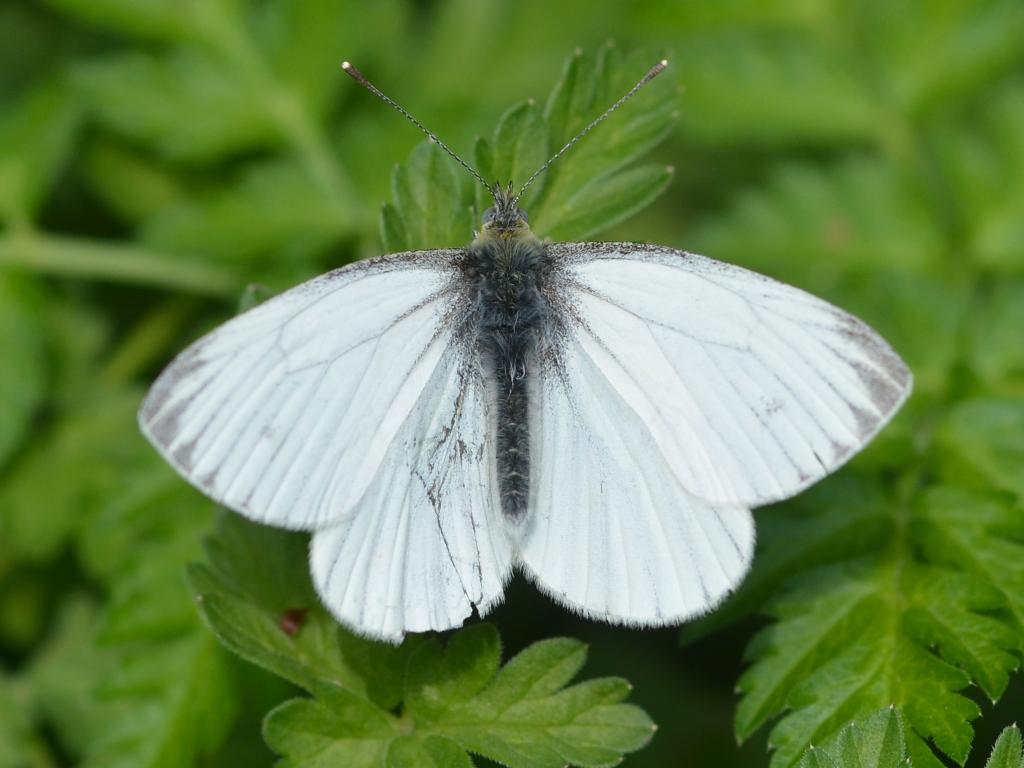
This butterfly is a common sight across much of Britain, but it is not as widespread as some other species. It can be found in open woodland and grassland areas and gardens. The green-veined white (Pieris napi) is distinctive thanks to its green veins on the underside of the wings, which are seen more clearly when it rests with its wings closed.
Gatekeeper
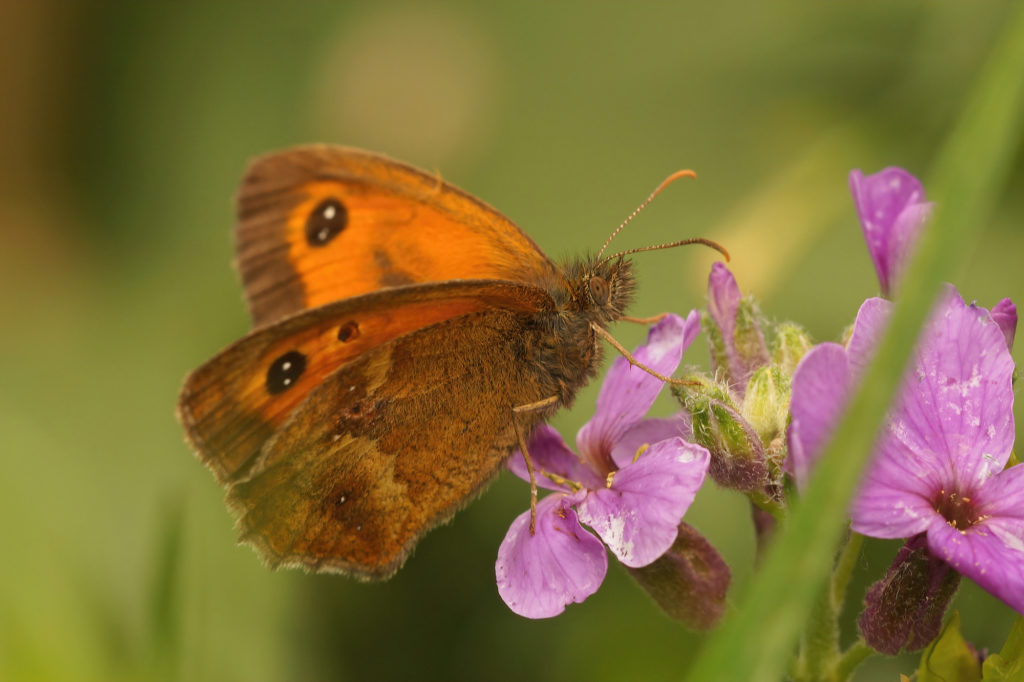
With a wingspan of around 35 mm and bright orange spots on its hindwings, the gatekeeper (Pyronia tithonus) can be identified at a distance by almost anyone. Young males often have a darker spot on their forewings that gradually fades once they become adults. It can be found on a wide range of flowers, including honeysuckle, oxeye daisies and cowslips. Once common butterflies, climate change and habitat loss have seen a decrease in this species in recent years.
Red Admiral
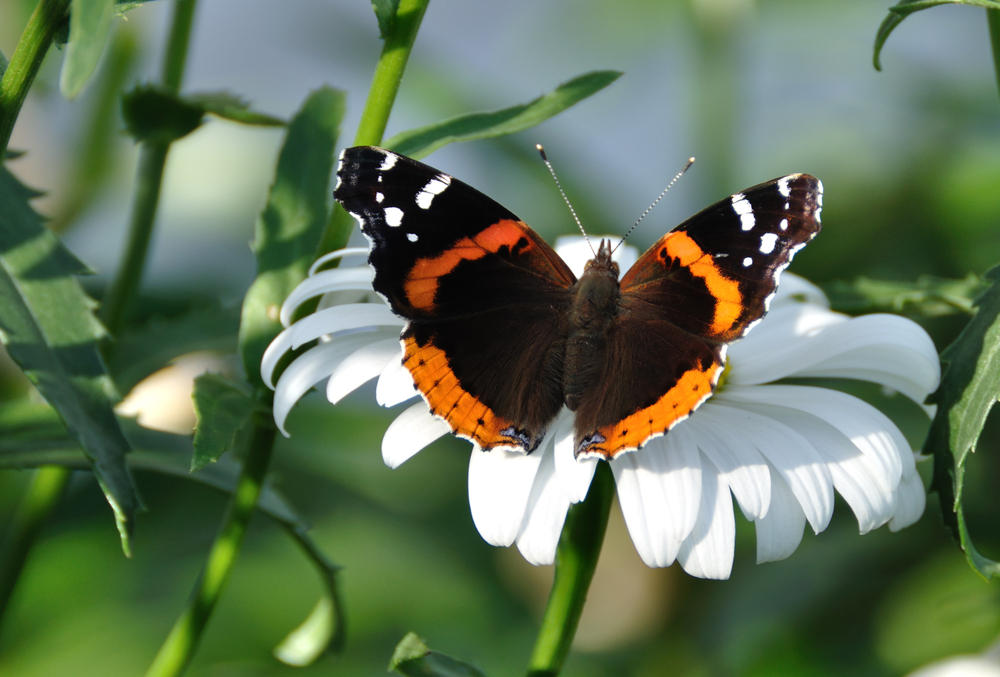
The red admiral (Vanessa atalanta) is a large butterfly found throughout Great Britain, flitting amongst the flowers in gardens, meadows, parks and woodland clearings. You will also see them occasionally in urban areas such as towns and cities. They are black with bright reddish-orange and sometimes deep red stripes on the forewings and hindwings. The caterpillars also have distinctive black dots along their bodies.
Comma

Another butterfly with a distinctive appearance, the comma (Polygonia c-album) is quite common in Britain and Ireland during the summer months, especially in urban green spaces and gardens. The name ‘comma’ is derived from its distinctive comma-shaped black markings on the underside of its wings. You will most likely only see these butterflies on sunny days, and they can be seen in large numbers flying around lawns and countryside in late spring and early summer.
Common Blue

You may see these butterflies flying about when you’re visiting a park or even on your front lawn at home. Think of the common blue (Polyommatus icarus) as being a combination of other species such as the Blue, Ringlet and Small Blue. With bright blue wings that have a brown border and white fringe, these UK butterflies visit gardens it’s a sight for sore eyes.
Small Tortoiseshell
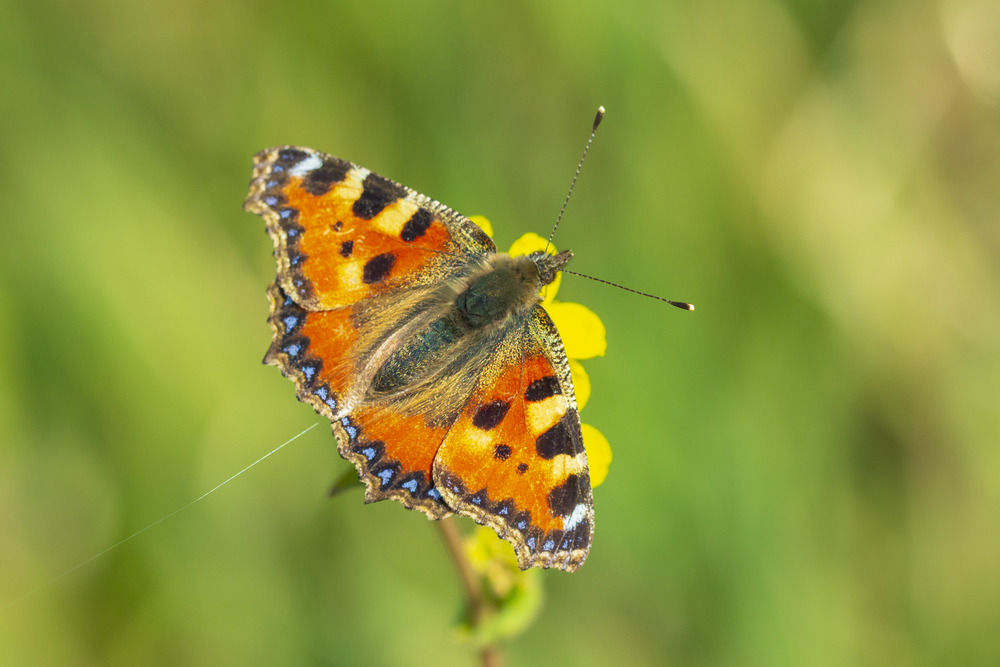
This delicate butterfly is not a resident of Britain, but it is common to see them on sunny days in suburban gardens here in the UK. The adult small tortoiseshell butterflies (Aglais urticae) are brown with bold orange patches, with black and yellow markings on their forewings and a strip of blue spots across the edge of its wings. They enjoy feeding on various plants, including Hawthorn and willowherbs.
Peacock

The peacock butterfly (Inachis io) is a largely red butterfly, but it has distinctive black-edged blue eyespots on the upper side of each wing which look like a peacock’s tail feathers. This butterfly is widespread in its distribution throughout Great Britain and Ireland, including the Channel Islands. It is common in gardens and open countryside, especially where nettles are present. It can also be seen at woodland edges, hedgerows and along roadsides. You will see the males patrolling all year round, searching for females, but they are most numerous in summer when you can find them basking on walls and trees.
Brimstone

The brimstone butterfly (Gonepteryx rhamni) is a familiar sight in the UK, and you may even see it in your own backyard! The female adults have pale green wings, while males have yellow-green underwings and yellow upper wings. But its most distinguishing feature is its strong veining which almost look like leaves. The wings are decorated with orange spots, and the male has more spots than the female. As a caterpillar, it feeds on wild strawberries and is green with black marks.
Sources and References
- How To Identify Common Garden Butterflies – wildlifetrusts.org
- Guide To British Butterflies: How To Identify and The Best Places To Spot – countryfile.com
Sam loves to learn about animals and their habitats. He has been a nature lover from a very young age, and has been writing papers and articles about wildlife for as long as he can remember.

Thank you Sam! I am seeing some gorgeous butterflies in my garden in Oxfordshire and your site helped me identify them. Emma
My pleasure 🙂